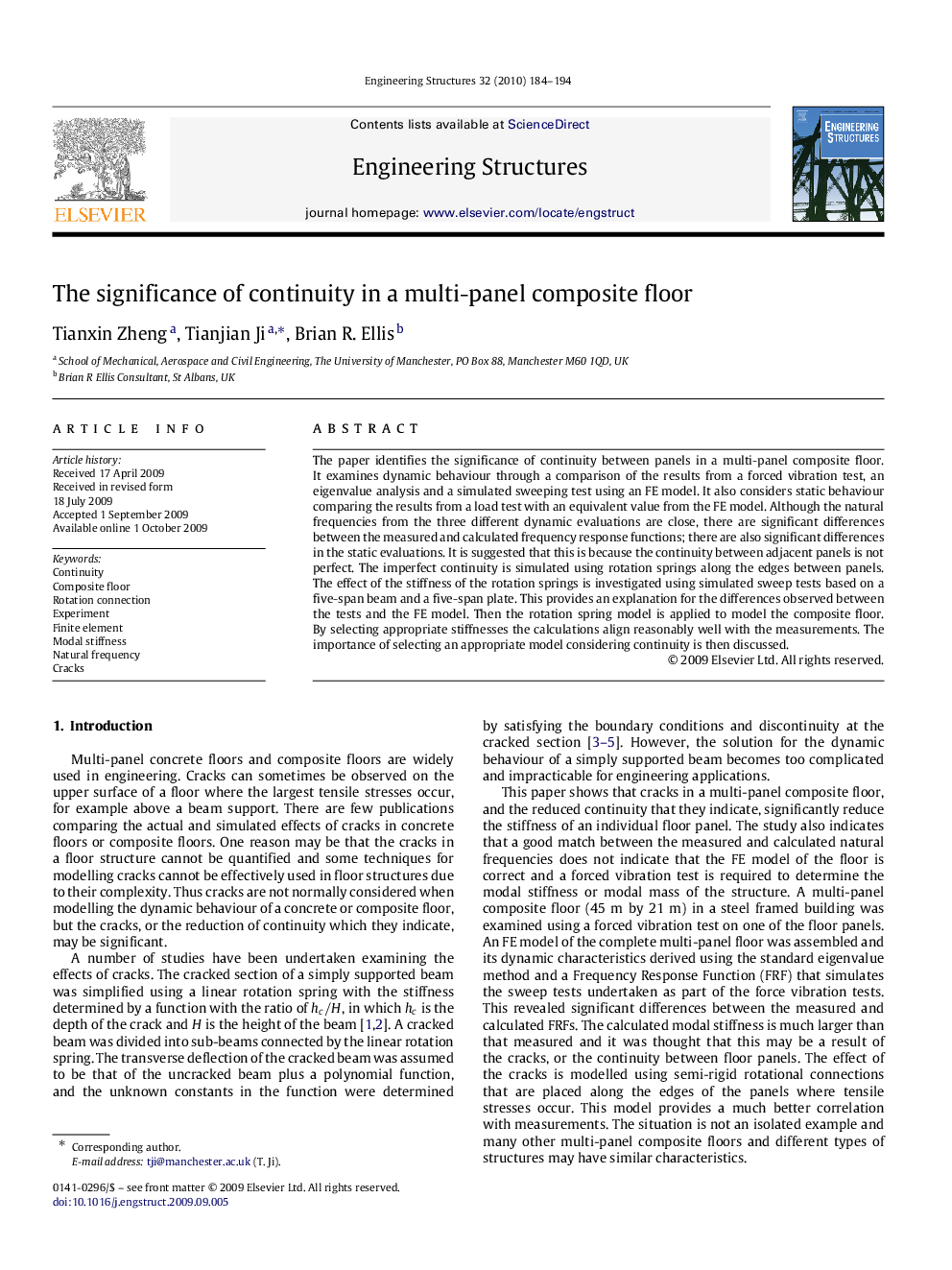| Article ID | Journal | Published Year | Pages | File Type |
|---|---|---|---|---|
| 268692 | Engineering Structures | 2010 | 11 Pages |
The paper identifies the significance of continuity between panels in a multi-panel composite floor. It examines dynamic behaviour through a comparison of the results from a forced vibration test, an eigenvalue analysis and a simulated sweeping test using an FE model. It also considers static behaviour comparing the results from a load test with an equivalent value from the FE model. Although the natural frequencies from the three different dynamic evaluations are close, there are significant differences between the measured and calculated frequency response functions; there are also significant differences in the static evaluations. It is suggested that this is because the continuity between adjacent panels is not perfect. The imperfect continuity is simulated using rotation springs along the edges between panels. The effect of the stiffness of the rotation springs is investigated using simulated sweep tests based on a five-span beam and a five-span plate. This provides an explanation for the differences observed between the tests and the FE model. Then the rotation spring model is applied to model the composite floor. By selecting appropriate stiffnesses the calculations align reasonably well with the measurements. The importance of selecting an appropriate model considering continuity is then discussed.
